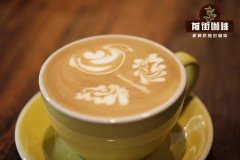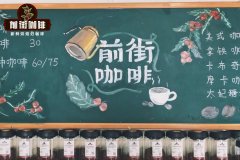Summary of the manufacturing methods of black tea in tea garden
1. Plucking
The method of picking tea varies depending on the management method of the tea garden, but it is usually based on one bud and two leaves, and there are often those who reach the third leaf. If the third leaf is too mature and hardened, do not kill it. Picking tea leaves is often done by hand, because it is easy to choose the appropriate leaves. Tea workers carry bamboo baskets on their shoulders, put the leaves in the baskets, and when the leaves are full, they are transported back to the factory at regular intervals (usually three times a day) for withering.
two。 Withering
Withering is the first step in the production of black tea. After entering the factory, the fresh leaves must be evenly distributed on the withered net, so that the total moisture is slowly reduced and becomes soft and suitable for kneading. This procedure is called withering.
The reason for withering: fresh leaves contain about 75% moisture, even though they are picked in dry weather. If they are not withered first and then rolled, only a lot of wet fragments will be obtained, and most of the tea juice containing the main ingredients will be squeezed out of the kneading machine. On the contrary, if the fresh leaves are fully withered, they become soft and easy to bend, and the juice in the leaves is not easy to break when kneaded. At the same time, the juice in the leaves has become thick because of the evaporation of its excess water.
Method of withering: after entering the factory and weighing, the fresh leaves must be sent to the withering room and spread evenly on the withered bed made of linen cloth to wither slowly. Usually the tea leaves are soft and flexible, although the ribs or leaf stalks are pressed by hand without breaking. It's for moderate withering.
In wet weather, hot air must be used to help, otherwise the withering time will be too long, which will harm the quality of tea. After withering, the tea must be moved to the kneading machine for kneading and twisting.
3. Knead and roll
Purpose of kneading: the main purpose of kneading is to break the cell tissue of tea and release tea juice, which is immediately dissolved in hot water when making tea. The effect of kneading and twisting gives most of the tea a beautiful appearance. Although this is not the original intention of kneading, it has been handed down from generation to generation, and it has become a habit for the world market to like beautiful tea. At present, the shape has been listed as one of the factors in the evaluation of tea.
Kneading machines: there are different types of kneading machines, but its main structure can be divided into three parts, that is, kneading plates with bones, bottomless kneading buckets, and screw kneading covers with pressure adjustment. Kneading and twisting machine is generally divided into two kinds, when kneading tea, kneading bucket as horizontal rotation, called single-acting kneading machine, kneading bucket and kneading plate making horizontal rotation at the same time, called double-acting kneading machine.
Fresh block machine and its usage: the rolling of tea can not be finished at once, because the coarse leaves need more kneading and pressure than the young leaves. At regular intervals, the lumps formed by crushing and rolling should be broken to pass through the air. If the young abandoned and the coarse leaves are finished at the same time, the bud tip of the former will be dyed by the tea juice, and the tea will also be damaged by fermentation. Therefore, if the young leaves have been fully rolled, they must be removed from the self-kneading machine and separated from the coarse leaves. This is the function of the unblocking machine.
The main structure of the cutter is a funnel and an oblique vibrating screen. The tea is put into the funnel and falls on the sieve surface. Due to the vibration of the sieve, the young leaves are screened out by other ends, and the young leaves are sent to the fermentation room, and the coarse leaves are sent back to the kneading and twisting machine for kneading and twisting.
4. Ferment
The reason for fermentation: tea leaves ferment to deepen the color of the tea, ease its original irritation, so that the aroma developed to the highest level. At the beginning of ordinary self-kneading, it takes about 4-5 hours. When the tea leaves are rolled and the tea juice is exposed to the air, fermentation begins until it is dried. Some tea gardens in Ceylon want to make excitant tea. after each break-up, they are no longer fermented and dried. In most other tea gardens, when the leaves are rolled for the last time, they no longer go through the formalities of fermentation, because when they are rolled, the tea has been fully leavened.
The method of fermentation: after the tea is sent to the fermentation room, it must be spread out on a layer of fermentation bed, usually 1.5 to 2 inches thick, so that it can be fully fermented. When leavened moderately, the tea has a bright copper color, which is very different from its original cyan, and emits the same aroma as the ripe apple apple. At that time, it must be sent to the baking room for baking.
5. Baking
The purpose of baking: the purpose of baking is to make the tea evaporate its moisture by high heat and destroy the co-enzyme, so as to stop the acid fermentation, and the matter in the leaves changes as soon as it is heated, giving out the unique malt aroma of dry tea and the same grade to meet the needs of the market.
The method of screening: screen bamboo sieves with various sizes of sieve holes, using hands as the screening method. Modern or large-scale tea factories often use screening machines, which are standardized because of their high efficiency.

7. Packing
Before the tea is boxed, all grades of tea must be piled up first. due to the differences in origin and weather during picking and manufacturing, the tea made every day is slightly different in appearance and quality. in order to make the quality of the tea uniform, it is necessary to assemble the tea and then pack it. Tea is easy to absorb moisture in the atmosphere, so it is necessary to bake or replenish fire before packing. The tea box is usually packed with a special packing machine, which is composed of a metal table with movable screw clips to hold the tea box tightly. The metal table uses a steel shaft, which is connected to the eccentric wheel installed on the moving shaft, and the moving shaft rotates at a high speed, which causes the metal table to vibrate at extreme speed. If so, the tea can be tightly filled in a very short time without pressure. The size of the tea box is usually divided into two types, namely, full box or half box, the capacity of the former depends on the size of the tea, usually from 80 to 130 pounds, the latter from 50 to 90 pounds.
Important Notice :
前街咖啡 FrontStreet Coffee has moved to new addredd:
FrontStreet Coffee Address: 315,Donghua East Road,GuangZhou
Tel:020 38364473
- Prev

The difference between a fine latte and a single latte
Professional coffee knowledge exchange more coffee bean consultation Please pay attention to the definition of fine coffee in the coffee workshop (Wechat official account cafe_style). According to the Fine Coffee Association (SCA), a cup of high-quality coffee must pay attention to details from the beginning of planting, picking and roasting until the cup of coffee is brewed before reaching the strict and exquisite process of fine coffee. An outline of boutique coffee
- Next

The nomenclature of boutique coffee Yejashefi Coffee. Common treatment of Yega Chefe Coffee
Professional coffee knowledge exchange more coffee bean consultation Please pay attention to Coffee Workshop (Wechat official account cafe_style) Ethiopia is the birthplace of Arabica coffee, also known as the genetic treasure house of coffee, its original varieties and diverse varieties create a unique flavor of coffee, famous for its elegant floral flavor and citrus flavor. And Yega Sheffield Coffee from Ethiopia is even more
Related
- Beginners will see the "Coffee pull flower" guide!
- What is the difference between ice blog purified milk and ordinary milk coffee?
- Why is the Philippines the largest producer of crops in Liberia?
- For coffee extraction, should the fine powder be retained?
- How does extracted espresso fill pressed powder? How much strength does it take to press the powder?
- How to make jasmine cold extract coffee? Is the jasmine + latte good?
- Will this little toy really make the coffee taste better? How does Lily Drip affect coffee extraction?
- Will the action of slapping the filter cup also affect coffee extraction?
- What's the difference between powder-to-water ratio and powder-to-liquid ratio?
- What is the Ethiopian local species? What does it have to do with Heirloom native species?

